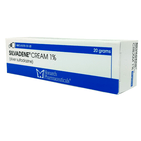

It’s available by prescription and helps prevent infection.īut it can slow skin healing and may increase your risk of developing scars. Silver sulfadiazine is an antibacterial cream. You can apply the ointment two to three times per day or any time you change your dressing. So they’re a popular option to apply to burns. Mupirocin is another option, but it’s only available with a prescription.Īntibiotic ointments are easy to find and relatively inexpensive. Popular over-the-counter burn ointments include: Here’s what to put on a burn to help with healing and pain relief: Antibiotic ointments There are several topical burn ointments you might find helpful. What topical ointments can you put on a burn? Keep the area covered when you’re outdoors. You also want to protect your burned skin from ultraviolet (UV) rays. If you develop blisters, don’t pop them! Popping blisters can let bacteria into your wound and cause infection. If you see signs of infection (like worsening redness or swelling), see a healthcare provider right away. What may have seemed like a minor burn at first might be more serious than you thought. Burns can change a lot in the first 48 hours. You can take acetaminophen (Tylenol), ibuprofen (Motrin, Advil) or naproxen (Aleve), if you’re experiencing pain from your burn. Change your dressing one to two times a day and anytime it gets dirty or wet. Or you can place a nonstick pad (like Telfa or Adaptic) over the ointment and wrap the area loosely with gauze. You can use a clean cloth or basic gauze over a thin layer of burn ointment.

After applying ointment, wrap your burn in a dressing. This protection keeps your burn safe from injury when you change or remove a dressing.Īdd a clean dressing. Ointments also offer skin protection and create a barrier so your dressing doesn’t stick to your skin. A thin layer of antibiotic ointment keeps your skin safe from bacteria. A burn ointment does double duty for burn care. So it’s important to keep it clean to avoid infection.Īpply ointment. Wash your burn gently with soap and cool or room temperature water. You can cool the area of the burn by placing it under running water that’s either cool or room temperature. Burned skin swells, so be sure to take off any jewelry, especially rings.Ĭool your burn. Take off anything covering your burned skin in case it’s adding to the problem. If you have a first-degree burn, follow these steps: Unlike a superficial burn, you may form blisters and notice wetness due to fluid leaking from the damaged skin. In partial-thickness burns, or second-degree burns, the injury extends below the topmost layer of skin. The skin appears red and is painful to the touch, but there’s no blistering. You should seek immediate medical attention if the burn:Ĭauses redness that extends beyond the border of the burnĪ superficial, or first-degree burn, is like a sunburn. But it’s important to recognize the signs of a more serious burn that needs the help of a medical professional. Here are some “do’s” and “don’ts” for what to put on burns. And you may already have some ointments in your medicine cabinet that can help. The good news is that you can treat superficial burns at home. But once you get your bearings, it’s time to figure out what you can put on a burn so it heals as quickly as possible. In the heat of the moment, it can be stressful figuring out what to do if you get a burn.


 0 kommentar(er)
0 kommentar(er)
